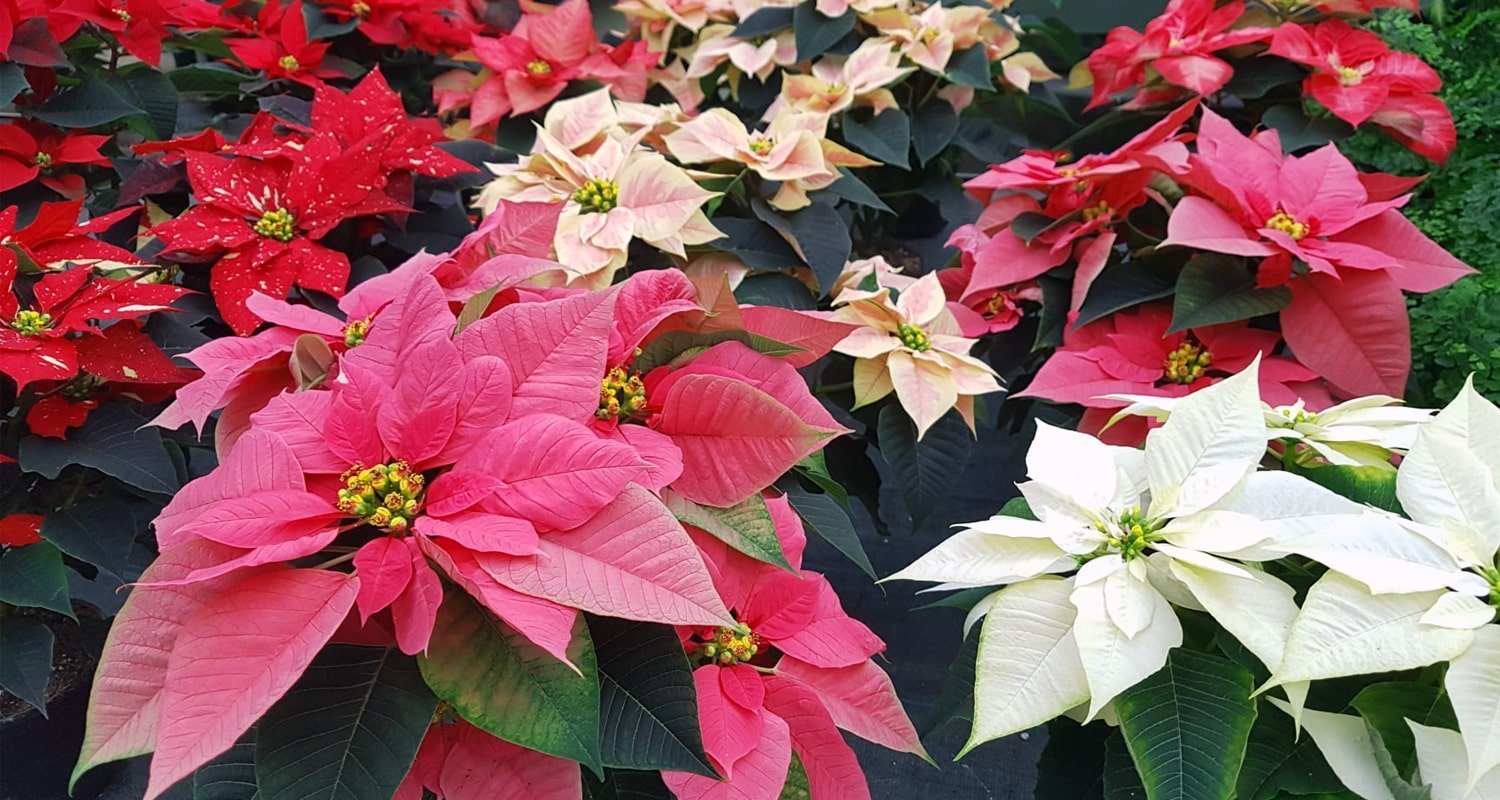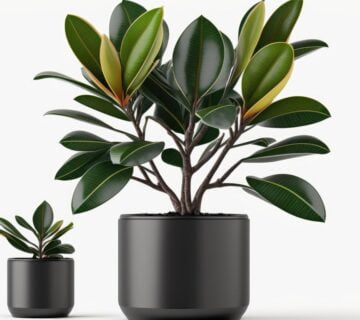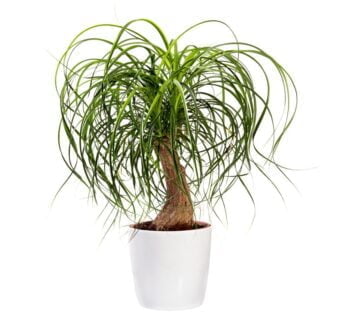Poinsettia
Poinsettia, scientifically known as Euphorbia pulcherrima, is a famous and iconic plant associated with the holiday season. Poinsettia adds a festive touch to homes, offices, and public spaces during winter with its vibrant red, white, pink, or multicoloured bracts.
Origins and Characteristics:
Poinsettia is native to Mexico and Central America and thrives in tropical and subtropical climates. It is a member of the Euphorbiaceae family and is known for its large, colourful bracts surrounding the tiny flowers. The bracts come in various colours, including red, white, pink, and bi-coloured varieties.
Light and Temperature Requirements:
Poinsettia requires bright, indirect light for at least six hours daily to maintain its vibrant bract colour. Avoid placing it in direct sunlight, as it can scorch the leaves. Poinsettia prefers temperatures between 60°F and 70°F (15°C to 21°C) during the day and slightly cooler temperatures at night.
Watering and Humidity:
Water the Poinsettia when the top inch of the soil feels dry, but avoid overwatering or letting it sit in standing water. Allow excess water to drain correctly to prevent root rot. Poinsettias appreciate moderate humidity, so misting the leaves or placing a tray of water nearby can help maintain adequate moisture levels.
Soil and Potting:
Use a well-draining soil mix specifically formulated for houseplants or a combination of peat moss, perlite, and vermiculite. The soil should retain moisture without becoming waterlogged. Repot the Poinsettia into a slightly larger container when it outgrows its current pot.
Fertilization:
Apply a balanced, water-soluble fertilizer formulated for flowering plants every two to four weeks during the active growing season, typically from spring to early fall. Follow the manufacturer’s instructions for proper dilution and application rates.
Pruning and Maintenance:
Pinch or prune the Poinsettia in early spring to encourage bushier growth. Remove any faded or damaged bracts and trim back leggy or overgrown branches. Wear gloves when pruning, as the milky sap of Poinsettia can cause skin irritation for some individuals.
Extended Blooming:
To encourage Poinsettia to bloom for an extended period, provide it with at least 14 hours of uninterrupted darkness each night for 6 to 8 weeks before desired blooming time. Cover the plant with a lightproof cloth or place it in a dark room during this period.
Poinsettia and Pets:
While Poinsettia is often associated with toxicity, it is relatively safe for pets. However, it’s best to keep Poinsettia out of reach of curious pets to avoid any potential digestive discomfort.
Propagation:
Propagate Poinsettia through stem cuttings taken in late spring or early summer. Dip the cuttings in rooting hormone and plant them in a well-draining soil mix. Provide bottom heat and keep the soil consistently moist until new roots form.
Beyond the Holidays:
While Poinsettia is most commonly associated with the holiday season, it can be enjoyed as a year-round houseplant. With proper care and attention, Poinsettias can be encouraged to rebloom in subsequent years, providing lasting beauty and enjoyment.
With its vibrant colours and association with the holiday season, Poinsettia is a beloved plant that adds a festive touch to any home or office.
Things to know about Poinsettia
Common (vernacular) Name
एन्थूरियम (Hindi), Anthurium, Flamingo Lily, Flamingo Flower, Painter's Palette, Lace Leaf, Pigtail Plants, Tail Flower and many more.
Botanical Name
Anthurium Andraeanum
Origin
Mexico to Tropical America (Colombia, Ecuador).
Family
Araceae
Plant Type
Tropical plant
Plant Features
Ornamental / Evergreen / Exotic
Life Cycle
Perennial
Landscape Uses
Container Planting and Houseplants.
Species
Belolonchium, Calomystrium, Cardiolonchium, Chamaerepium, Cordatopunctatum, Dactylophyllium, Decurrentia, Digitinervium, Gymnopodium, Leptanthurium, Pachyneurium, Polyphyllium, Polyneurium, Porphyrochitonium, Schizoplacium, Semaeophyllium, Tetraspermium, Urospadix, Xialophyllium.
Varieties
It comes with thousand of different varieties in a diversity of leaf and flower colorations.
Size
Height : 1 to 1.5 feet tall and Width : 1 feet wide when mature.
Indoors or Outdoors
Outdoors : Anthurium can be used outdoors in shady plantings, avoid direct sun light.
Indoors : Excellent plant grow in bright light or indirect light. Best indoor plants for beginners.
Blooming / Flowering
Blooming period is throughout the year.
Flower Colour
It’s come with a contrasting spadix Gold, Yellow, Orange, Pink, White, Green, Purple, Red, Burgundy, Multicolored and Variegated colours.
Lucky Plant
According to Feng Shui, It bring Good Luck in your relationships.
Lighting / Sun Exposure
Bright Indirect Sunlight.
Temperature
Grow best preferably warm temperature above 21°C and can be tolerate max temp. as high as 32°C.
Growth Rate
Anthurium is a slow to moderate growers plant.
Watering
Moderate watering, Mist or over head sprinkler to provide water and to improve relative humidity. Not tolerate overwatering it may cause root damage and yellowing of the leaves.
Fertilizer
Slow-release fertilizer, or a water-soluble liquid fertilizer once or twice in the growing season (Spring through Summer).
i.e. - Cow dung, DAP, Compost, NPK 30-10-10 fertilizer, liquid organic fertilizer etc.
Pruning
Pruning of Anthurium not much is needed. However, trimming away only discolored or dead leaves.
Propagation
Seeds : The best time to sow your Anthurium seeds is in the end of Winter / early Spring but it can't can give good result.
Stem Cuttings : The easier methods of propagation of Anthurium in water or in soil via stem cuttings, and can be done during the warm growing season.
Division : Division of Anthurium can be done in Rainy season, or better in February to March.
Dormancy Period
Month : November to February (winter season)
Shed their leaves and show poor growth, Watering minimally.
Avoid : Propagate, Fertilize and Repotting.
Container
Ceramic Pot, Plastic Pot, Terracotta or Clay Pot is preferred, which ensures good drainage as well as water holding capacity.
Soil Type
A well-drained Loam / Coarse potting soil is recommended as well as water holding capacity. Prevent soggy potting medium.
Our recommendation for potting mix : Equal part mixture of Garden Soil (25%) + Compost (25%) + River Sand (25%) + Cocopeat (25%). You can substitute pieces of Charcoal, Vermicompost, Perlite etc.
Soil pH
Lightly Acidic soil - Ideally 5.5 to 6.5 pH (potential of hydrogen) is recommended for Anthurium.
Repotting
It is advisable to repot the Anthurium every year or two preferably spring to midsummer season.
Maintenance
Low maintenance and easy to grow.
Properties
Toxic or Poisonous to both humans and pets upon ingestion.
Benefits
Excellent indoor air purifier, Anthurium plants turns CO2 into oxygen. It purifies indoor air by removing harmful chemicals like ammonia, toluene, xylene and formaldehyde.
Special Features
Doesn't attract hummingbirds and pollinators like butterflies and bees or wasps.
Infestation / Pests
Aphids, Scale insects, Thrips, Mealy bugs, Spider mites and caterpillars etc.
Diseases / Problem
Physiological Problem : Anthracnose, Leaf Spot and Powdery Mildew.
Bacterial Problem : Bacterial Blight, Bacterial Wilt and Black Nose Disease.
Fungal Problems : Root Rot and Water Mold.
Some Glimpse of Poinsettia






No comment